Board game design
Recently, in the Higher School of Business Informatics, HSE, in the framework of the Game Management Project, a private workshop was held by invited expert Yuri Zhuravlev on the theme Game Design of Board Games. Yuriy Zhuravlev himself has been in game design for 7 years already, and he has been working on it today. He published such games as the Vicar, Costa Rouen, Zoo Magic, the Guild of Laar and a number of others. Under the cut, we have prepared for you an outline of his lecture.
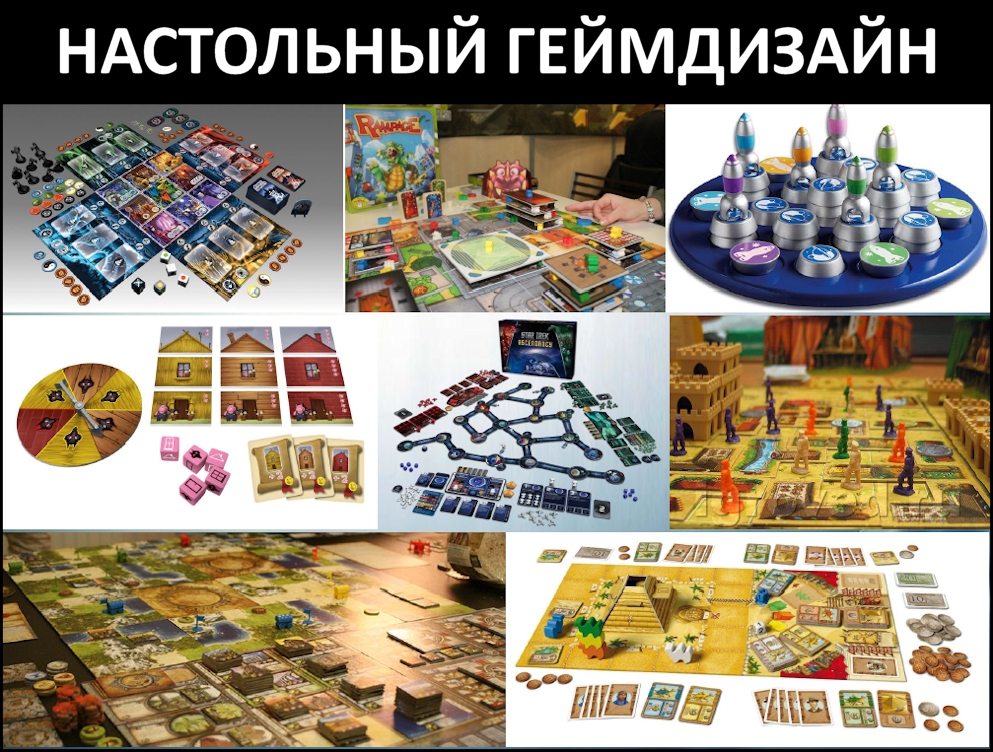
A game is a phenomenon not only of human life, but also a phenomenon of life in general, since everyone plays, both adults, and children, and animals. Enough ancient games have reached our days, or references to them, including those that existed on earth 3 thousand - 4.5 thousand years ago.
But can everything be called a game? The following symptoms are distinguished:
What does a game designer have to work with when creating a board game? So:
')

Cards
Pros:
+ contain a lot of text and images;
+ give a high level of randomness;
+ hidden information;
+ save state;
+ ease of manufacture;
+ variability mechanic.
Minuses:
- give a high level of randomness;
- fragility;
- routine.
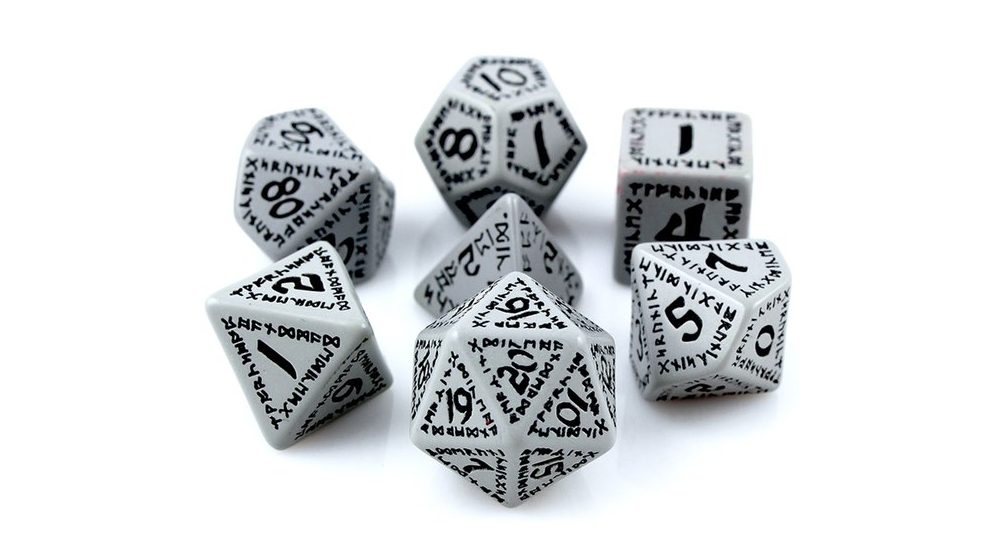
Dices (cubes)
Pros:
+ instant result;
+ compactness;
+ high level kinesthetics;
+ ease of use in games;
+ Custom options are attracted to the game.
Minuses:
- give a high level of randomness;
- fragility;
- routine.

Playing fields
Pros:
+ visibility for players;
+ attracting attention;
+ elegant design;
+ modularity is possible.
Minuses:
- big sizes;
- almost always used the variation of the mechanics of "area control";
- vulnerability to earthquakes.

Chips and Markers
Pros:
+ unload memory;
+ visibility;
+ perfectly preserve the state;
+ made of wood, plastic, metal.
Minuses:
- vulnerability to earthquakes;
- most often nondescript;
- easy to lose;
- Difficulties for color blind.
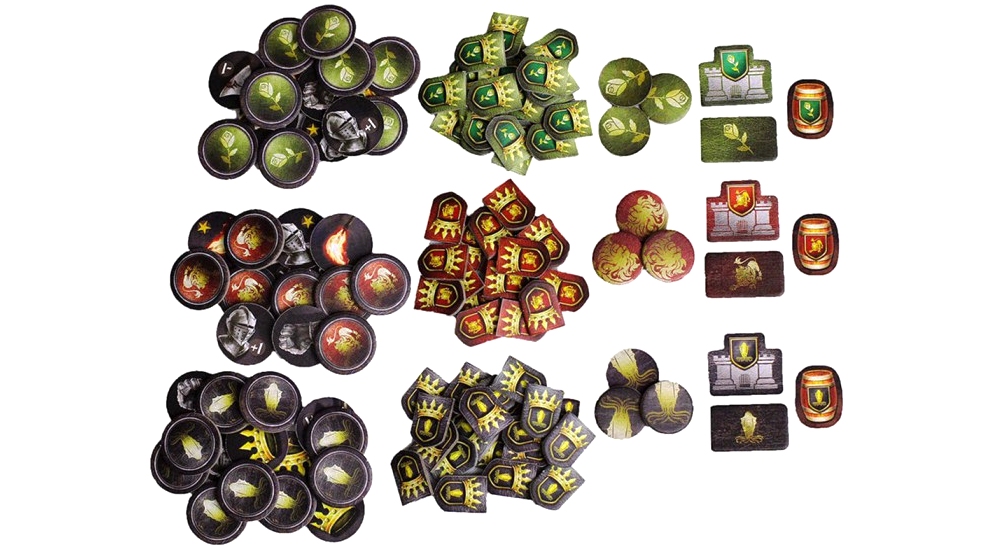
Tokens
Pros:
+ unload memory;
+ visibility;
+ perfectly preserve the state;
+ availability of information on them;
+ beautiful design;
+ abundance mechanic.
Minuses:
- easy to lose;
- fragility.
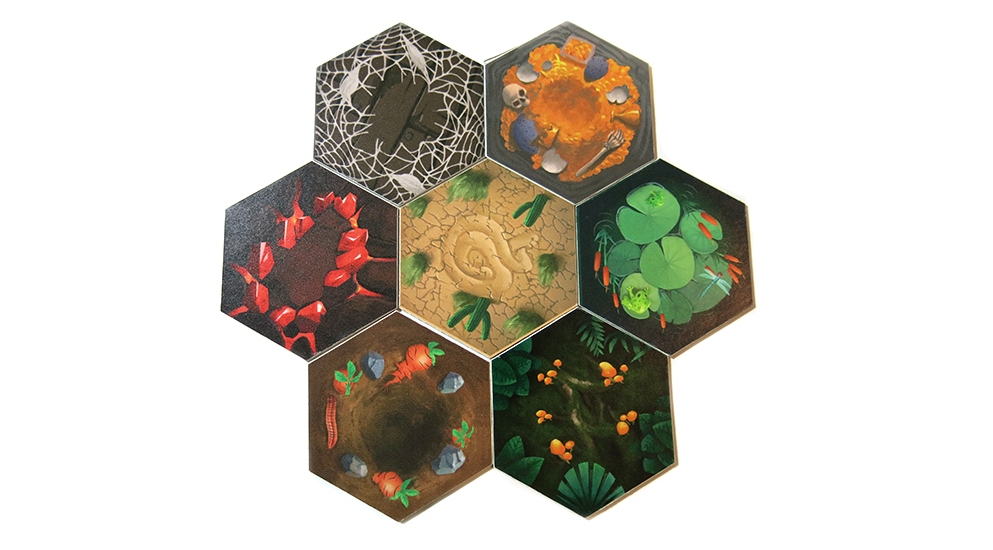
Tiles
Pros:
+ visibility;
+ perfectly preserve the state;
+ can be the playing field;
+ availability of information on them;
+ beautiful design;
+ almost always on the table, durability;
+ come in any shape.
Minuses:
- The playing field of the tiles is often "sprawled."
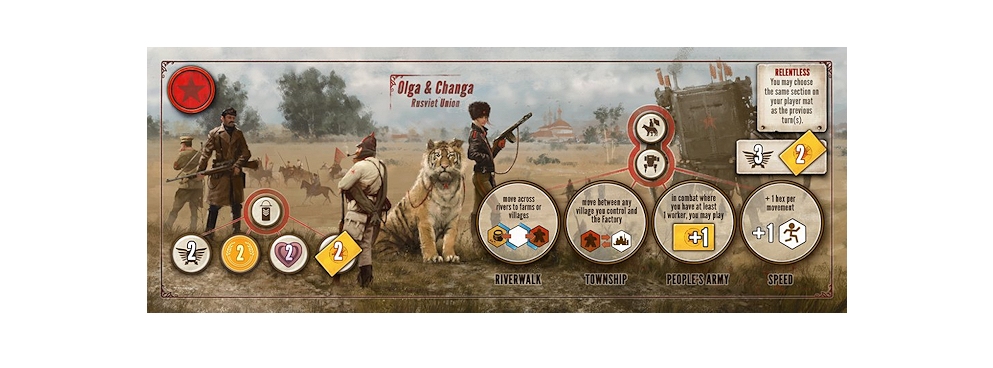
Tablets
Pros:
+ visibility for players;
+ attracting attention;
+ elegant design;
+ small size.
Minuses:
- vulnerability to “earthquakes”;
- unique information.

Thumbnails
Pros:
+ attracting attention;
+ elegant design;
+ high level kinesthetics.
Minuses:
- high cost;
- do not give a unique gaming experience;
- the danger of becoming miniaturized.

Screens
Pros:
+ elegant design;
+ small size;
+ convenient way to hide information;
+ Memo on the game on the inside.
Minuses:
- do not give a unique gaming experience;
- vulnerability to “earthquakes”.
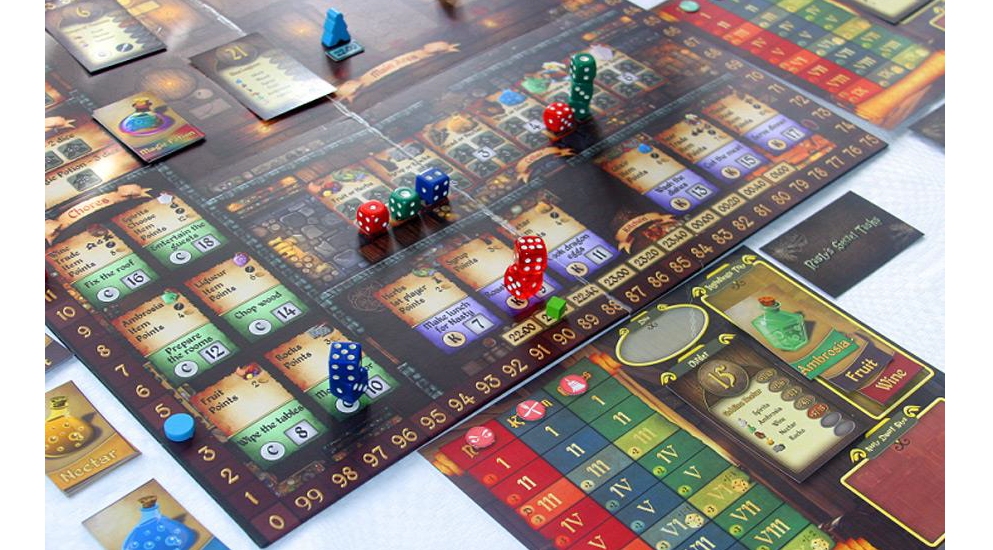
Having dealt with these work items, you can go to the main types of board game mechanics, which are formed from various combinations of the above objects.
Namely:
So, how to make your own game: how can one look for ideas, how to make prototypes correctly, how and with whom to conduct tests, what needs to be balanced in the game, and how best to publish it?

Method I: Homerums
Instruction:
1. Play a board game.
2. To love her, but not very much :)
3. Come up with rules by which you will enjoy playing it. And maybe your friends.
4. Break in rules with friends, and maybe put them on the net.
Method II: Copy and Paste
Instruction:
1. Play a board game.
2. Love her very much.
3. Come up with exactly the same, but about florists orcs.
4. Add to your game a few "significant" differences from the original.
Method III: cool story
Instruction:
1. Read a book or watch a movie.
2. Be inspired by the plot.
3. Come up with rules by which the characters of a book or movie could act in the game.
4. Do not be able to do this and add event cards to the game.
Method IV: Players Spin the Crocodile
Instruction:
1. Play a board game or look around.
2. In the process, see a cool gaming solution.
3. Use it in your own way.
4. Add to the game a dozen of the same cool solutions.
Method V: Brainstorm
Instruction:
1. Want to do a board game.
2. Choose a time, call friends, stock up on paper and pencils.
3. Create.
4. PROFIT!
Method VI: be children
Instruction:
1. Scatter components from board games on the floor, table, balcony and bathroom.
2. Remember yourself as a child.
3. Play the components as it is played, just to get high.
4. After writing cool ideas, do not collect anything: suddenly stepping on a cube, will it strike you again?

Now important information about the prototyping of your future game.
Prototype requirements:
1. It should be. And the sooner the better.
2. It can play at least a couple of moves.
3. Draft design.
4. Readiness to it with a handle.
5. Readiness to throw out some first iterations.
Major errors:
1. Final art.
2. Bad ergonomics.
3. The convenience of players is not thought out.
4. Non-playable balance.

This is followed by a testing phase.
Tasks for testing:
1. Identify the viability of the concept.
2. Find serious bugs and breaks.
3. Rid the game of crutches.
4. Collect the emotional response of testers.
5. Bring the game to the final balance.
6. Polish the game to shine.
Testing script:
1. Find like-minded people or just kind people and arrange a meeting
2. Tell the rules of the game on the spot. It is not necessary to send the rules in advance if this is not a presentation to the publisher.
3. It is advisable not to play yourself / yourself, but to watch from the sidelines.
4. Respond to questions from testers, discuss controversial issues, come up with new rules in time.
5. Record all ideas, questions, results of the party: the winner and its duration.
6. Ask 3 questions: what did you like in the game, what didn't you like in the game, would you still play?

Behind testing should begin the stage of balancing.
Types of balance:
1. Mathematical balance: zero amount.
2. Emotional balance: transactions.
3. Testers balance: there are no weak links.
4. Player self-balance: what immediately am I ?!
5. The balance of the author: I am an artist, I see it.

After all this, you need to decide whether to publish your project yourself, collecting money for it through crowdfunding systems, or resort to the services of a publisher . In the second case, it is worth considering the following features:
The specifics of working with the publisher:
1. The contract for ~ 5 years with royalties of 4-7% of wholesale.
2. 98% change in setting.
3. Recycling ~ 30% of the game to the needs of the publisher.
4. A lot of feedback from testers.
5. The ability to get an order for development.
Thank you Yuri for such a useful and interesting workshop!
Taking this opportunity, we invite you to our absolutely free exhibition-conference “Lecture Day on the Gaming Industry” , where we will have new reports on the gaming industry, the notes from which will also be published on Habré.

A game is a phenomenon not only of human life, but also a phenomenon of life in general, since everyone plays, both adults, and children, and animals. Enough ancient games have reached our days, or references to them, including those that existed on earth 3 thousand - 4.5 thousand years ago.
But can everything be called a game? The following symptoms are distinguished:
- The game is free, it can not be made mandatory for the player.
- The game is limited in space and time accurate and predetermined limits.
- The game has an uncertain outcome, it is impossible to predetermine its development, to predict its result; The need for invention leaves some freedom for the player’s initiative.
- The game does not create wealth and wealth, is not related to the material interests of the parties.
- The game is subject to a number of conditions that suspend the operation of ordinary laws and establish new legislation that is valid for the duration of the game.
- The game is fictitious, accompanied by a specific consciousness of some sort of secondary reality or simply unreality in comparison with ordinary life.
What does a game designer have to work with when creating a board game? So:
')

Cards
Pros:
+ contain a lot of text and images;
+ give a high level of randomness;
+ hidden information;
+ save state;
+ ease of manufacture;
+ variability mechanic.
Minuses:
- give a high level of randomness;
- fragility;
- routine.

Dices (cubes)
Pros:
+ instant result;
+ compactness;
+ high level kinesthetics;
+ ease of use in games;
+ Custom options are attracted to the game.
Minuses:
- give a high level of randomness;
- fragility;
- routine.

Playing fields
Pros:
+ visibility for players;
+ attracting attention;
+ elegant design;
+ modularity is possible.
Minuses:
- big sizes;
- almost always used the variation of the mechanics of "area control";
- vulnerability to earthquakes.

Chips and Markers
Pros:
+ unload memory;
+ visibility;
+ perfectly preserve the state;
+ made of wood, plastic, metal.
Minuses:
- vulnerability to earthquakes;
- most often nondescript;
- easy to lose;
- Difficulties for color blind.

Tokens
Pros:
+ unload memory;
+ visibility;
+ perfectly preserve the state;
+ availability of information on them;
+ beautiful design;
+ abundance mechanic.
Minuses:
- easy to lose;
- fragility.

Tiles
Pros:
+ visibility;
+ perfectly preserve the state;
+ can be the playing field;
+ availability of information on them;
+ beautiful design;
+ almost always on the table, durability;
+ come in any shape.
Minuses:
- The playing field of the tiles is often "sprawled."

Tablets
Pros:
+ visibility for players;
+ attracting attention;
+ elegant design;
+ small size.
Minuses:
- vulnerability to “earthquakes”;
- unique information.

Thumbnails
Pros:
+ attracting attention;
+ elegant design;
+ high level kinesthetics.
Minuses:
- high cost;
- do not give a unique gaming experience;
- the danger of becoming miniaturized.

Screens
Pros:
+ elegant design;
+ small size;
+ convenient way to hide information;
+ Memo on the game on the inside.
Minuses:
- do not give a unique gaming experience;
- vulnerability to “earthquakes”.

Having dealt with these work items, you can go to the main types of board game mechanics, which are formed from various combinations of the above objects.
Namely:
- Worker-placement: Chips / Dice + Fields / Tablets / Maps / Tiles
- Tile-placement: Tiles + Chips
- Deckbuilding: Maps + Fields / Tablets at will
- Bagbuilding: Tokens / Cubes / Tiles / Chips + Sacks (which contain chips)
- Draft: Cards / Tiles + Tokens / Tablets at will
- Dice Rolling: Cubes
- Action Points and Action Selection: can include anything
So, how to make your own game: how can one look for ideas, how to make prototypes correctly, how and with whom to conduct tests, what needs to be balanced in the game, and how best to publish it?

Method I: Homerums
Instruction:
1. Play a board game.
2. To love her, but not very much :)
3. Come up with rules by which you will enjoy playing it. And maybe your friends.
4. Break in rules with friends, and maybe put them on the net.
Method II: Copy and Paste
Instruction:
1. Play a board game.
2. Love her very much.
3. Come up with exactly the same, but about florists orcs.
4. Add to your game a few "significant" differences from the original.
Method III: cool story
Instruction:
1. Read a book or watch a movie.
2. Be inspired by the plot.
3. Come up with rules by which the characters of a book or movie could act in the game.
4. Do not be able to do this and add event cards to the game.
Method IV: Players Spin the Crocodile
Instruction:
1. Play a board game or look around.
2. In the process, see a cool gaming solution.
3. Use it in your own way.
4. Add to the game a dozen of the same cool solutions.
Method V: Brainstorm
Instruction:
1. Want to do a board game.
2. Choose a time, call friends, stock up on paper and pencils.
3. Create.
4. PROFIT!
Method VI: be children
Instruction:
1. Scatter components from board games on the floor, table, balcony and bathroom.
2. Remember yourself as a child.
3. Play the components as it is played, just to get high.
4. After writing cool ideas, do not collect anything: suddenly stepping on a cube, will it strike you again?

Now important information about the prototyping of your future game.
Prototype requirements:
1. It should be. And the sooner the better.
2. It can play at least a couple of moves.
3. Draft design.
4. Readiness to it with a handle.
5. Readiness to throw out some first iterations.
Major errors:
1. Final art.
2. Bad ergonomics.
3. The convenience of players is not thought out.
4. Non-playable balance.

This is followed by a testing phase.
Tasks for testing:
1. Identify the viability of the concept.
2. Find serious bugs and breaks.
3. Rid the game of crutches.
4. Collect the emotional response of testers.
5. Bring the game to the final balance.
6. Polish the game to shine.
Testing script:
1. Find like-minded people or just kind people and arrange a meeting
2. Tell the rules of the game on the spot. It is not necessary to send the rules in advance if this is not a presentation to the publisher.
3. It is advisable not to play yourself / yourself, but to watch from the sidelines.
4. Respond to questions from testers, discuss controversial issues, come up with new rules in time.
5. Record all ideas, questions, results of the party: the winner and its duration.
6. Ask 3 questions: what did you like in the game, what didn't you like in the game, would you still play?

Behind testing should begin the stage of balancing.
Types of balance:
1. Mathematical balance: zero amount.
2. Emotional balance: transactions.
3. Testers balance: there are no weak links.
4. Player self-balance: what immediately am I ?!
5. The balance of the author: I am an artist, I see it.

After all this, you need to decide whether to publish your project yourself, collecting money for it through crowdfunding systems, or resort to the services of a publisher . In the second case, it is worth considering the following features:
The specifics of working with the publisher:
1. The contract for ~ 5 years with royalties of 4-7% of wholesale.
2. 98% change in setting.
3. Recycling ~ 30% of the game to the needs of the publisher.
4. A lot of feedback from testers.
5. The ability to get an order for development.
Thank you Yuri for such a useful and interesting workshop!
Taking this opportunity, we invite you to our absolutely free exhibition-conference “Lecture Day on the Gaming Industry” , where we will have new reports on the gaming industry, the notes from which will also be published on Habré.
Source: https://habr.com/ru/post/341998/
All Articles